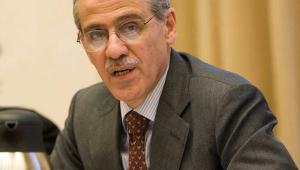By Judith Ugwumadu | 20 February 2014
India must increase public spending by almost 7% each year over the next decade to fill the most critical gaps in social infrastructure, a McKinsey Global Institute report has said.
The consultancy firm revealed that 50% of public spending on basic services, including food, energy, housing, education, and social security failed to reach some of India’s 1.23 billion population because of inefficiencies in governance and execution.
McKinsey laid out four inclusive reforms it believes could lift 580 million people above the Empowerment Line measure of poverty by 2022, while virtually eliminating extreme poverty.
These were greater public spending, more effective public services, faster job creation and improved farm productivity.
On public spending, McKinsey suggested India should almost double it expenditure from $118bn in 2012 to $226bn in 2022. The share of total public spending allocated to health, water, and sanitation services, however, needs to increase from 21% in 2012 to nearly 50% of total social spending in 2022.
Spending also needed to become more effective. ‘We estimate that half of India’s current public spending on basic services does not translate into improved outcomes for the poor. By 2022, however, that spending can become 50% more effective if the nation as a whole matches the standards already set by the best-performing states,’ McKinsey said.
The consultants highlighted some promising strategies for public service improvement. These included partnerships with the private and social sectors, greater community participation and use of technology to streamline and monitor operations.
McKinsey: ‘Put together, these [four reforms] would set off a virtuous cycle generating more revenue, thus enabling India to meet its fiscal deficit targets even as it ploughs additional funding into social infrastructure and achieves nearly universal coverage for the basics of health care, water, sanitation, and energy.
‘The path of inclusive reforms envisages a far more positive alternative, one in which the nation takes steps to stimulate investment, job creation, and farm productivity, as well as dramatically improve the delivery of basic services.’













